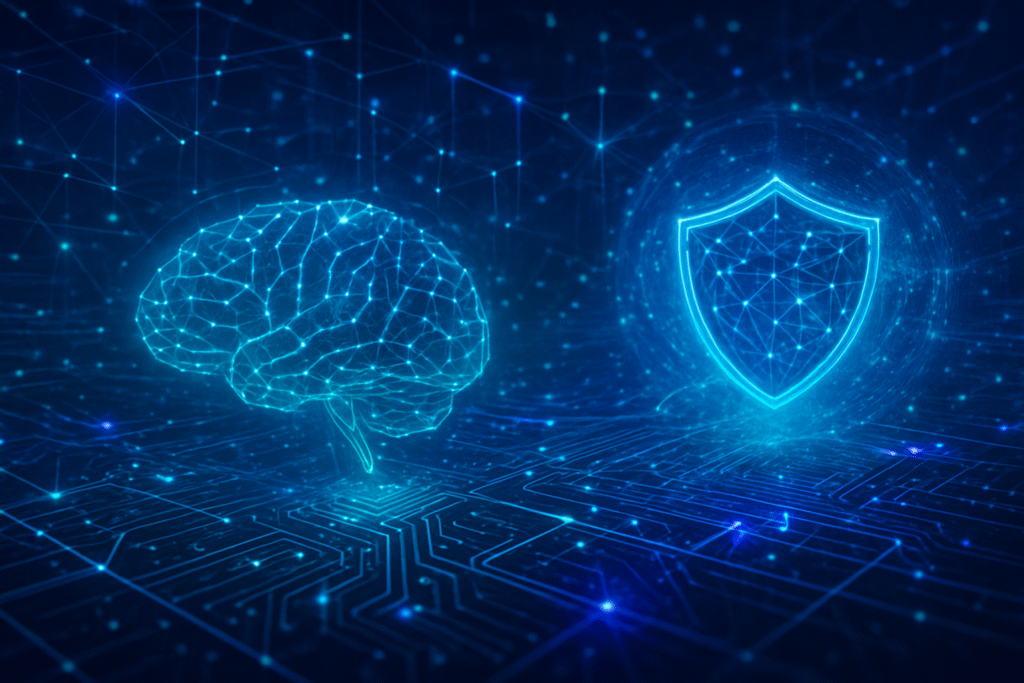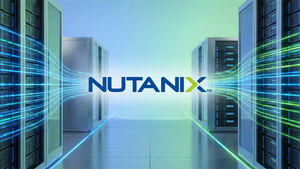AI-Powered Fortresses: Endpoint Security and Network Monitoring Redefine Digital Defense in 2025

As of November 2025, the digital battleground has fundamentally shifted, with Artificial Intelligence (AI) and Machine Learning (ML) emerging not just as tools, but as the very bedrock of modern endpoint security and network monitoring. The relentless pace of cyber threats, increasingly sophisticated and often AI-driven themselves, has necessitated a paradigm shift from reactive defense to proactive, intelligent, and autonomous protection. This evolution is marked by the widespread adoption of Zero Trust architectures, the convergence offered by Secure Access Service Edge (SASE), and the comprehensive visibility provided by Extended Detection and Response (XDR) solutions, all underpinned by advanced AI capabilities. These developments are not merely incremental improvements; they represent a critical re-armament in the ongoing arms race against cyber adversaries, safeguarding increasingly distributed and complex digital infrastructures against threats that are faster, smarter, and more evasive than ever before.
The immediate significance of these advancements is profound. Traditional, signature-based security measures are proving insufficient against polymorphic and zero-day attacks weaponized by AI. The new wave of solutions offers adaptive, predictive, and automated defenses crucial for securing hybrid workforces and cloud-centric operations. By integrating AI into every layer of defense, organizations are transforming their security posture, moving from overwhelmed incident response teams to proactive defenders capable of real-time threat neutralization and predictive risk management. This strategic pivot ensures business continuity, protects sensitive data, and helps meet stringent regulatory compliance in an era where a single breach can have catastrophic financial and reputational consequences.
The Dawn of Autonomous Defense: Technical Deep Dive into Next-Gen Cybersecurity
The current landscape of endpoint security and network monitoring is defined by a suite of interconnected technologies, each leveraging AI to deliver unprecedented levels of protection and insight. At the forefront is the AI and Machine Learning as the Cybersecurity Backbone. Next-Generation Endpoint Protection (NGEP) and Endpoint Detection and Response (EDR) solutions are now inherently AI-driven, moving beyond simple signature matching. These systems employ sophisticated behavioral analysis, continuously learning normal system patterns to identify minute anomalies in processes, memory usage, and system calls that signal malicious activity, even for previously unknown (zero-day) threats. Companies like Microsoft (NASDAQ: MSFT) with its Defender platform, and Tanium, are leading the charge in developing "agentic AI" for security operations, enabling autonomous detection, disruption, and containment of threats without human intervention, effectively shifting from reactive firefighting to proactive protection. Furthermore, new solutions such as Cyera's AI Guardian are emerging to provide AI asset inventory and real-time monitoring specifically for AI data risks, highlighting a growing focus on securing AI systems themselves.
Complementing AI-driven endpoint protection is the ubiquitous adoption of Zero Trust Architecture (ZTA). Moving beyond a mere concept, Zero Trust is now a strategic imperative, enforcing the principle of "never trust, always verify" across all users, devices, and applications. This is implemented through granular, identity-based access controls (Zero Trust Network Access or ZTNA), microsegmentation to isolate sensitive resources, and continuous monitoring of device health and user behavior. This approach fundamentally differs from traditional perimeter-based security models, which assumed trust within the network. With the dissolving corporate perimeter due to remote work and cloud adoption, ZTA provides a critical framework for securing access regardless of location or network segment. Governments are increasingly mandating Zero Trust adoption, underscoring its pivotal role in national cybersecurity strategies.
The evolution of Secure Access Service Edge (SASE) continues to consolidate networking and security into a single, cloud-native platform. SASE integrates SD-WAN with essential security services like Secure Web Gateway (SWG), Cloud Access Security Broker (CASB), ZTNA, and Firewall-as-a-Service (FWaaS). The latest iteration sees SASE entering an "AI-driven phase," featuring adaptive policy engines that dynamically adjust access based on real-time user risk scores and behavior, alongside edge intelligence for faster, more localized security decisions. This unified approach simplifies management, reduces total cost of ownership, and provides consistent security policies for hybrid and remote workforces, a significant departure from managing disparate point solutions.
Finally, Extended Detection and Response (XDR) platforms represent the natural evolution of EDR, offering a holistic view by integrating and correlating security data from endpoints, networks, cloud workloads, email, and identity. This cross-domain visibility, powered by AI analytics, allows security teams to identify complex attack patterns and lateral movement that siloed tools would miss. XDR solutions, such as those from SentinelOne (NYSE: S) with its Singularity XDR AI Platform and CrowdStrike (NASDAQ: CRWD) with Falcon® Insight XDR, leverage AI for automated threat hunting and accelerated incident response, drastically reducing alert fatigue and investigation times for overstretched security analysts. In network monitoring, AI and ML are being integrated into tools like those from Datadog (NASDAQ: DDOG) and Splunk (NASDAQ: SPLK) to provide real-time performance monitoring, automated anomaly detection, and enhanced visibility across increasingly complex hybrid and multi-cloud environments, including specialized offerings like Amazon EKS's Container Network Observability.
XDR AI Platform and CrowdStrike (NASDAQ: CRWD) with Falcon® Insight XDR, leverage AI for automated threat hunting and accelerated incident response, drastically reducing alert fatigue and investigation times for overstretched security analysts. In network monitoring, AI and ML are being integrated into tools like those from Datadog (NASDAQ: DDOG) and Splunk (NASDAQ: SPLK) to provide real-time performance monitoring, automated anomaly detection, and enhanced visibility across increasingly complex hybrid and multi-cloud environments, including specialized offerings like Amazon EKS's Container Network Observability.
Reshaping the Cybersecurity Market: Competitive Implications and Strategic Advantages
The seismic shifts in endpoint security and network monitoring are profoundly impacting AI companies, tech giants, and startups alike, creating both immense opportunities and significant competitive pressures. Companies that have heavily invested in AI-driven security platforms are reaping substantial benefits. SentinelOne (NYSE: S) and CrowdStrike (NASDAQ: CRWD), with their robust XDR offerings and autonomous AI capabilities, continue to solidify their positions as market leaders, demonstrating the efficacy of AI in threat detection and response. Palo Alto Networks (NASDAQ: PANW) is another key beneficiary, with its Cortex XDR platform leveraging advanced analytics and AI for comprehensive threat prevention and response. These companies are not just selling products; they are providing integrated, intelligent ecosystems that are becoming indispensable for enterprise security.
Tech giants like Microsoft (NASDAQ: MSFT) are leveraging their vast ecosystems and cloud infrastructure to deliver integrated security solutions, with Microsoft Defender XDR offering a compelling, AI-powered defense across its extensive product suite. This integrated approach presents a significant challenge to standalone security vendors, as it simplifies deployment and management for organizations already deeply embedded in the Microsoft ecosystem. Tanium is also making strides with agentic AI upgrades for endpoint management, expanding its reach into operational technology and mobile devices, showcasing the versatility of AI in diverse endpoint environments.
The competitive landscape for SASE solutions is also intense, with major players such as Fortinet (NASDAQ: FTNT), Zscaler (NASDAQ: ZS), and Netskope vying for market share. These companies are pushing towards more unified, AI-driven SASE platforms that promise to simplify operations and lower total cost of ownership for enterprises transitioning to cloud-first and hybrid work models. Startups specializing in niche AI security solutions, such as those focusing on AI asset inventory or specific AI data risk management, are also emerging, carving out new market segments by addressing the unique security challenges posed by AI adoption itself.
This intense competition is leading to significant disruption for existing products and services. Traditional, siloed security tools that lack AI integration or comprehensive cross-domain visibility are becoming obsolete. Organizations are consolidating their security stacks, favoring platforms that offer unified management, automation, and intelligent threat correlation. This trend forces traditional vendors to rapidly innovate and integrate AI into their offerings or risk being marginalized. The market positioning now heavily favors companies that can demonstrate superior AI capabilities, seamless integration across security layers, and a true Zero Trust philosophy embedded in their solutions, providing strategic advantages to those who embraced these trends early.
A New Frontier: Wider Significance and the Broader AI Landscape
The advancements in endpoint security and network monitoring are not isolated technical achievements; they are integral to the broader AI landscape and reflect a critical turning point in cybersecurity. The pervasive integration of AI into defensive mechanisms is a direct response to the escalating "AI-driven cyber arms race," where attackers are equally adept at weaponizing AI for automated and scaled attacks, sophisticated phishing, autonomous malware, and deepfake social engineering. This dynamic underscores the necessity for AI to fight AI, pushing the boundaries of what's possible in threat intelligence, detection, and response. The shift towards predictive threat intelligence, where ML models analyze vast datasets to anticipate future threats, signifies a move from reactive incident response to proactive risk mitigation, a monumental change in how organizations approach security.
The impacts of these developments are far-reaching. On the positive side, they significantly enhance an organization's resilience against financial losses, data breaches, and reputational damage. By automating threat detection and response, security teams can operate with greater efficiency and focus on strategic initiatives rather than being bogged down by alert fatigue. However, this new frontier also brings potential concerns. The increasing complexity of integrating diverse AI-powered security solutions can be daunting, requiring specialized skills that are already in short supply. Ethical considerations around AI's decision-making in security, potential biases, and the risk of AI systems being compromised themselves also warrant careful attention. Furthermore, the sheer volume of data processed by AI security systems raises privacy concerns, necessitating robust data governance frameworks.
Comparing this to previous AI milestones, the current state of cybersecurity AI is akin to the early days of advanced persistent threat (APT) detection, but amplified by orders of magnitude. While past breakthroughs focused on signature updates and basic behavioral analysis, today's AI-driven systems are capable of contextual understanding, adaptive learning, and autonomous action, mirroring the advancements seen in other AI domains like natural language processing and computer vision. This represents a maturation of AI's application in security, moving from theoretical promise to practical, mission-critical deployment. The push for Zero Trust adoption by governments, expected to be mandated by 2026 in several regions, further solidifies the significance of these developments, indicating a global recognition of their importance in securing national infrastructure and economies.
The Horizon: Future Developments and Expert Predictions
Looking ahead, the trajectory of endpoint security and network monitoring points towards even deeper integration of AI, greater automation, and a relentless pursuit of proactive and self-healing capabilities. In the near term, we can expect to see further refinement of agentic AI in security operations, moving towards truly autonomous security systems that can not only detect and respond but also learn, adapt, and even predict attacker movements with minimal human oversight. This will involve more sophisticated AI models capable of understanding nuanced attack narratives and orchestrating complex responses across an entire IT ecosystem. The convergence of SASE and XDR will also continue, leading to more unified and intelligent platforms that offer a single pane of glass for both network and security management, simplifying operations for IT and security teams.
Longer term, the focus will likely shift towards hyper-automation and self-healing networks. Imagine networks and endpoints that can automatically detect vulnerabilities, patch themselves, reconfigure access policies based on real-time risk assessments, and even isolate compromised segments without any human intervention. This vision includes the development of quantum-resistant algorithms to preemptively address the future threat posed by quantum computing's ability to break current encryption methods, a long-term but critical challenge. Potential applications on the horizon include AI-driven security posture management that provides continuous, real-time risk assessment and automated remediation across all digital assets, as well as AI that can simulate attack scenarios to proactively identify and close security gaps before they can be exploited.
However, several challenges need to be addressed to realize these future developments. The persistent cybersecurity talent gap remains a significant hurdle; while AI automates many tasks, skilled professionals are still required to manage, fine-tune, and evolve these complex systems. The integration challenges of disparate security tools, even AI-powered ones, will continue to be a concern, necessitating open standards and interoperable platforms. Most critically, the "AI arms race" will intensify, with attackers continuously finding new ways to exploit AI vulnerabilities or leverage AI for more sophisticated attacks. Experts predict a future where security will be less about erecting static walls and more about building adaptive, intelligent, and resilient digital organisms that can evolve alongside the threats they face. The emphasis will be on continuous verification, adaptive trust, and predictive defense, making security an intrinsic, rather than an additive, component of all digital operations.
Comprehensive Wrap-up: A New Era of Digital Resilience
The rapid advancements in endpoint security and network monitoring, particularly the deep integration of AI and ML, mark a pivotal moment in cybersecurity history. The key takeaways from this evolving landscape are clear: traditional security models are obsolete, proactive and adaptive defense is paramount, and AI is no longer an optional add-on but a fundamental necessity. The widespread adoption of Zero Trust architectures, the convergence offered by SASE, and the holistic visibility provided by XDR platforms are collectively building a new era of digital resilience, enabling organizations to defend against increasingly sophisticated and AI-driven cyber threats. These technologies are transforming security operations, empowering teams to move from reactive firefighting to strategic, predictive defense, significantly enhancing operational efficiency and reducing the risk of costly breaches.
This development's significance in AI history lies in demonstrating AI's critical role in safeguarding the very digital infrastructure that underpins modern society and commerce. It showcases AI's capability to not only automate tasks but to provide intelligent, adaptive, and autonomous decision-making in high-stakes environments. The long-term impact will be a more secure and resilient digital world, where businesses can innovate and operate with greater confidence, knowing their digital assets are protected by advanced, intelligent defenses. However, it also highlights the ongoing need for human expertise, ethical considerations, and continuous innovation to stay ahead in the dynamic cyber arms race.
In the coming weeks and months, we should watch for further announcements regarding AI-driven SASE and XDR platform unification, new government mandates for Zero Trust, and the emergence of specialized AI security solutions addressing specific threats to AI systems themselves. The continuous evolution of threat intelligence, particularly how AI is leveraged to predict and neutralize novel attack vectors, will also be a critical area of observation. The future of cybersecurity is one of continuous adaptation, where human ingenuity, augmented by advanced AI, will remain the ultimate defense against an ever-evolving threat landscape.
This content is intended for informational purposes only and represents analysis of current AI developments.
TokenRing AI delivers enterprise-grade solutions for multi-agent AI workflow orchestration, AI-powered development tools, and seamless remote collaboration platforms.
For more information, visit https://www.tokenring.ai/.
More News
View More




Recent Quotes
View More
Quotes delayed at least 20 minutes.
By accessing this page, you agree to the Privacy Policy and Terms Of Service.